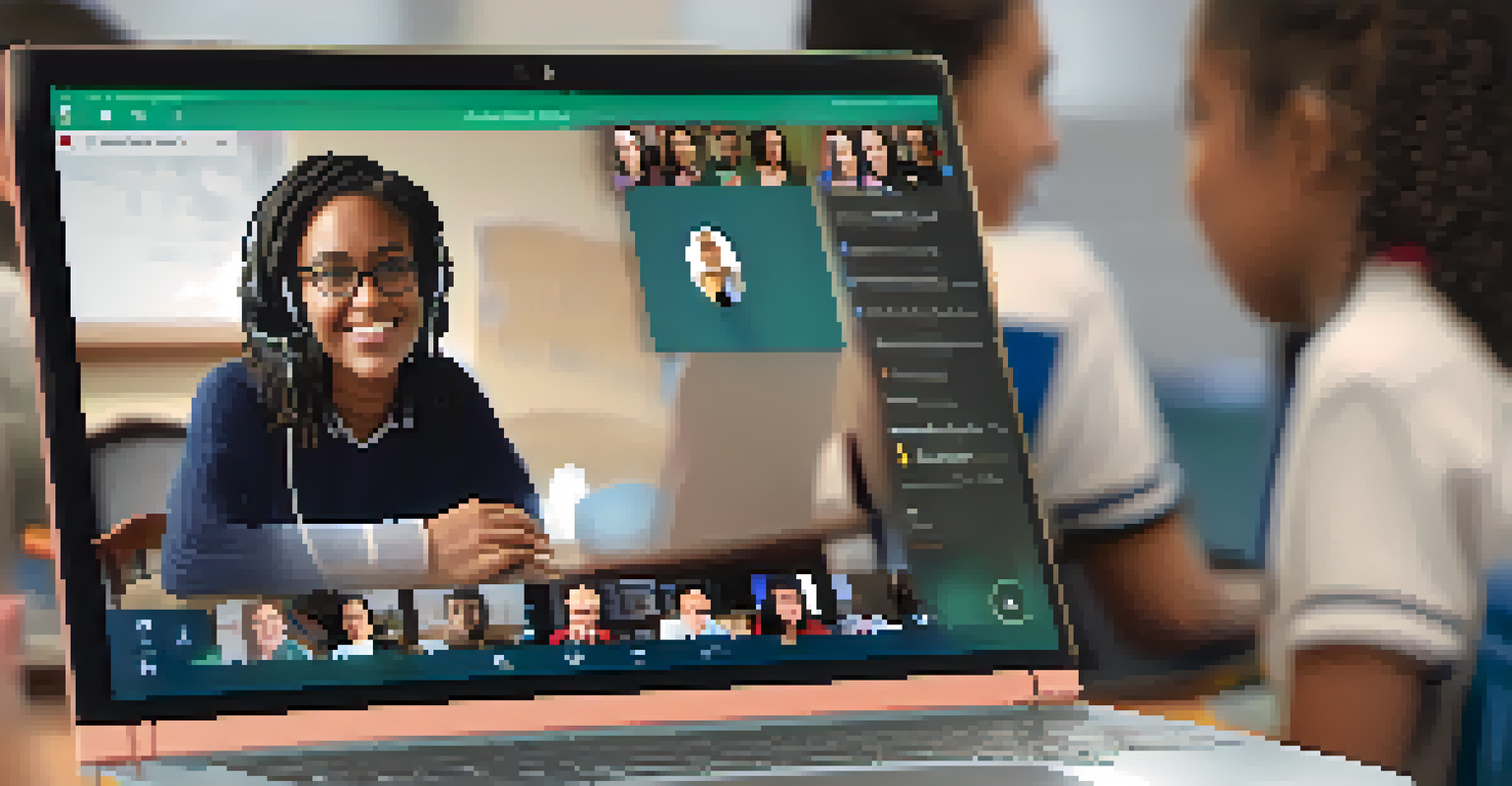Designing Curriculum Around Community Issues and Needs

Understanding the Importance of Community-Centric Curriculum
Designing a curriculum that centers on community issues is crucial for relevance. When students see the direct impact of their learning on their surroundings, engagement levels rise. This approach fosters a sense of ownership and responsibility among learners, making education more meaningful.
Education is not preparation for life; education is life itself.
Moreover, addressing real-world problems provides students with practical skills they can carry into their careers. For instance, a curriculum that includes local environmental challenges can inspire students to develop solutions that benefit their communities. This not only enriches their educational experience but also contributes positively to society.
Ultimately, a community-centric curriculum prepares students to be active participants in their neighborhoods. It encourages critical thinking and problem-solving, as they must analyze issues and collaborate on potential solutions. This holistic approach helps create informed citizens ready to tackle the challenges that lie ahead.
Identifying Community Issues to Address in Curriculum
The first step in designing a relevant curriculum is identifying the pressing issues in the community. This could range from environmental concerns, like pollution, to social issues such as homelessness. Engaging with local stakeholders, including community leaders and residents, can provide valuable insights.

Conducting surveys or focus groups can also help educators pinpoint the topics that matter most to their students and the community at large. For example, if a school is located in an area struggling with food insecurity, incorporating lessons on nutrition, agriculture, or food justice can be impactful. This ensures that the curriculum is not only educational but also socially responsible.
Community-Centric Curriculum Benefits
Designing a curriculum that addresses local issues enhances student engagement and fosters a sense of responsibility.
By aligning the curriculum with community needs, educators can create a learning environment that feels relevant and urgent. Students are more likely to engage deeply with topics that resonate with their experiences. This connection can spark a passion for learning and motivate them to take action.
Collaborating with Community Organizations for Resources
Partnering with local organizations can greatly enhance the curriculum by providing resources and expertise. Non-profits, government agencies, and businesses often have programs that align with educational goals. By collaborating, schools can access valuable materials and support that enrich the learning experience.
The greatest responsibility of a teacher is to awaken joy in creative expression and knowledge.
For instance, a partnership with a local environmental group could lead to field trips, guest speakers, or hands-on projects. This not only brings real-world experiences into the classroom but also strengthens community ties. Students benefit from learning directly from those who are actively working to address these issues.
Moreover, these collaborations can serve to inspire students by showcasing career paths related to community service and activism. When students see professionals engaged in meaningful work, it can motivate them to consider similar paths. This connection between education and community involvement can have a lasting impact.
Incorporating Service Learning into the Curriculum
Service learning is an effective method for connecting curriculum with community needs. It combines classroom instruction with meaningful community service, allowing students to apply what they’ve learned in real-world settings. For example, a project could involve students working on a local park clean-up while learning about environmental science.
This hands-on approach not only reinforces academic concepts but also instills a sense of civic responsibility. Students gain firsthand experience with community issues, fostering empathy and understanding. This experiential learning helps them see the tangible impact of their efforts, deepening their engagement.
Collaboration Enhances Learning
Partnering with community organizations provides valuable resources and real-world experiences that enrich education.
Additionally, service learning can enhance students' soft skills, such as teamwork and communication. By working collaboratively on community projects, they develop essential skills that are valuable in both personal and professional realms. This comprehensive educational experience creates well-rounded individuals ready to tackle future challenges.
Creating a Flexible Curriculum That Adapts to Community Changes
A successful curriculum must be adaptable to changing community needs. Issues can evolve quickly, and educators should be prepared to shift their focus accordingly. This flexibility allows educators to stay relevant, ensuring that students are always learning about current challenges.
Regular feedback from students and community stakeholders can guide these adaptations. By maintaining open lines of communication, educators can gauge which topics resonate and which may need re-evaluation. For instance, if a new health crisis emerges, the curriculum may need to pivot to include health education and public awareness.
Incorporating a review process helps keep the curriculum fresh and aligned with community dynamics. This ongoing assessment ensures that students remain engaged and invested in their learning. It also reinforces the idea that education is a lifelong journey, closely tied to the world around them.
Utilizing Technology to Enhance Community-Centric Learning
Technology can play a pivotal role in designing a curriculum that addresses community issues. Online platforms can facilitate collaboration, allowing students to connect with community organizations and experts. This virtual engagement broadens their perspectives and enhances their learning experience.
For example, using social media or video conferencing tools, students can interview local leaders or participate in virtual community meetings. This not only brings real-world insights into the classroom but also teaches digital literacy – a skill essential in today’s world. Technology bridges the gap between classroom learning and community involvement.
Adaptability is Key to Relevance
A flexible curriculum that evolves with community needs ensures students remain engaged and informed about current challenges.
Moreover, technology can help students conduct research on community issues, making data collection more accessible. They can analyze trends, gather opinions, and even share their findings with a wider audience. This empowers students to take ownership of their learning while contributing valuable insights to their communities.
Evaluating the Impact of Community-Focused Curriculum
Evaluating the effectiveness of a community-focused curriculum is essential for continuous improvement. Gathering feedback from students, teachers, and community partners can provide insights into what works and what doesn’t. This evaluation process can include surveys, interviews, or reflective discussions.
Measuring engagement and outcomes is also crucial. Are students actively participating in community projects? Are they able to articulate the issues they’re learning about? These indicators can help educators adjust their approaches and ensure that the curriculum remains impactful.

Additionally, showcasing success stories can inspire others to adopt similar practices. Sharing results with the community not only builds trust but also highlights the positive effects of a community-centric curriculum. This encourages ongoing collaboration and investment in education as a tool for community betterment.